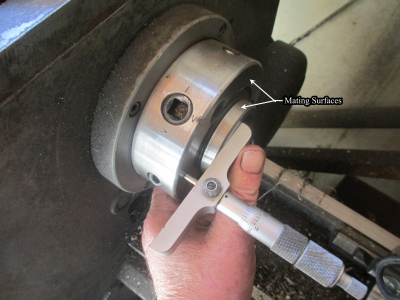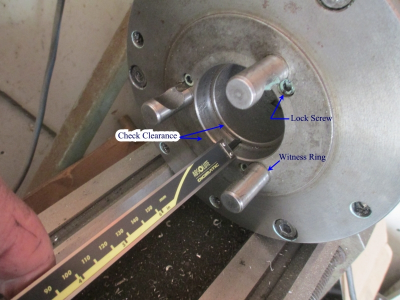Hi Mhagadorn. You have asked a very good question. All the replies are also good, and well worth reviewing.
The cam torque values are interesting. I have never heard of anyone torquing the cams. Once you get this sorted out, it is unlikely you will torque it either.
It seems that you are needing to torque the cams to a higher load than should be necessary. I probably have mine torqued about the way dave2176 recommends.
I believe the chuck should pull right up against the flat face of the spindle AND fully contact the taper. As Jim pointed out, both mounting surfaces are important (you are on the right track about trying to get rid of the small light gap). Another consideration is how difficult it is to remove the chuck. My preference is that the chuck breaks free of the taper, with a bump from my hand.
I have gone through and "tuned" the mounting of my chucks. Setting of the pins is pretty obvious. Of course, mark the location so the same pin goes back in the same hole. After setting the pins, I followed an approach similar to what Jim described above - except I didn't measure anything. As you are adjusting the taper, you need to be very careful. Remember, you are advancing a shallow taper about 0.001" - the amount you need to remove is EXTREMELY small. You probably only need to remove 0.0001" (or less). Perhaps the best way is to grind that taper? The approach I took (following the advice of wiser folks than I) was to simply work a little material out with abrasive cloth (sand or polish the material away). It really does not take very long. Working with just the back plate held in your other chuck, give it a polish, test the fit, polish some more, test the fit, . . . and so on until the back. It is a bit tedious to keep removing the chuck holding the first backplate, reinstalling the 3 pins, testing the fit, removing the pins, putting the other chuck back on, gripping the backplate in question, work a little more material out - then repeat. With this method, you really don't need to fuss to much about getting the adapter plate all nicely centered - after all, you are hand polishing.
Once you have the adapter plate so it fits to your liking, then skim the mounting surfaces where the chuck will land. The flat landing surface will then locate to the accuracy ability of the lathe. You have the choice with the rabbit fit of making it snug (to register with the corresponding location in the back of the chuck), or leave it slightly loose, and bump the chuck into final alignment before you finish tightening the bolts that secure the chuck to the adapter plate (sort of a poor man’s "SetTrue"). To start with, I recommend making the rabbit a snug fit, then see what sort of run out you get - if it is satisfactory, then leave it.
I recently purchased a blank D1-4 adapter plate for a collet chuck (auction prize). I followed the above approach and the run-out on a pin held in the “new” chuck is ~0.0005” (close as I can measure) – which is what Bison claims to achieve.
http://www.hobby-machinist.com/threads/backing-plate.41246/#post-354309
Let us know how it all works out.
Regards, David



